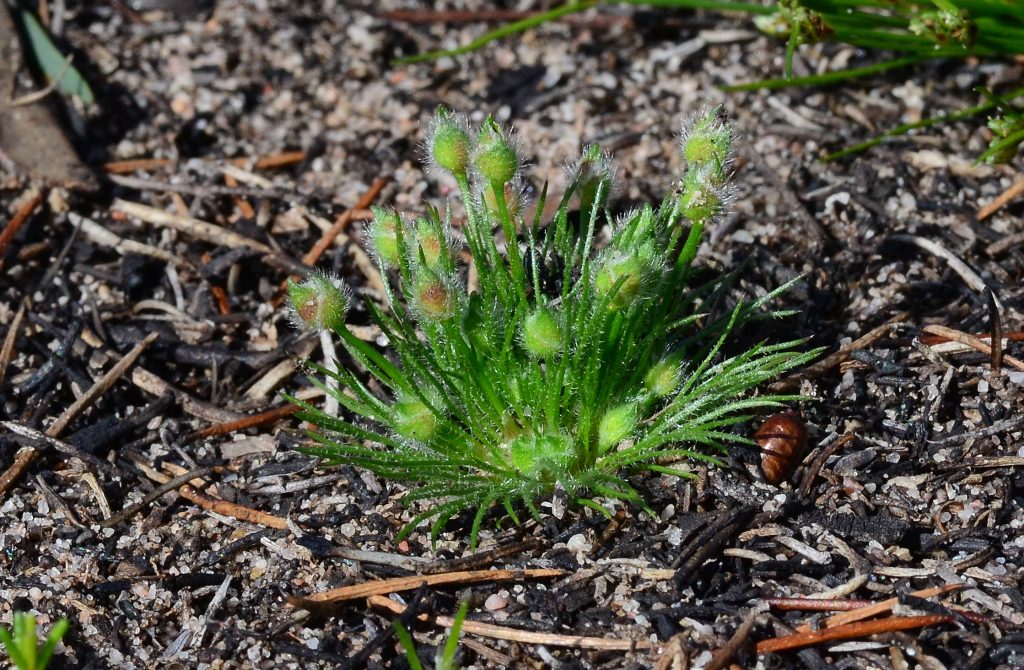Centrolepis strigosa subsp. strigosa
Hairy CentrolepisTufted herb. Leaves (5–)10–40 mm long, ± erect, straight to curved, and thread-like, moderately (sometimes sparsely) hairy. Inflorescence borne on an axis (10–)15–35(–90) mm long, hence flowers mostly held above the leaves; bracts slightly spreading, only just exceeding the length of the inflorescence, covered with long, multicelled, rigid hairs, both bracts with a basal sheath 1.8–2.5 mm long, both tapering into a ± straight lamina 0.5–1 mm long; lower bract inserted 0.5–1 mm below the upper one, and slightly longer than upper bract. Inflorescence units 5–10 per head-like cluster. Stamens (absent or) 1 per inflorescence unit, fused at base to each axis bearing carpels. Carpels 5 or 6, in sub-opposite to alternate pairs; styles c. 1–1.3 mm long, free. Flowers Oct.–Dec, rarely Sep.
LoM, MuM, Wim, GleP, Brid, VVP, VRiv, GipP, OtP, WaP, Gold, CVU, GGr, DunT, NIS, EGL, EGU, WPro, HSF, HNF, OtR, Strz, VAlp. All States except NT. New Zealand. Abundant and widespread throughout most of State, occurring in shallow sandy or auriferous soils, and in mossfields on rocky outcrops.
Conn, B.J. (1994). Centrolepidaceae. In: Walsh, N.G.; Entwisle, T.J., Flora of Victoria Vol. 2, Ferns and Allied Plants, Conifers and Monocotyledons, pp. 190–196. Inkata Press, Melbourne.
 Spinning
Spinning


